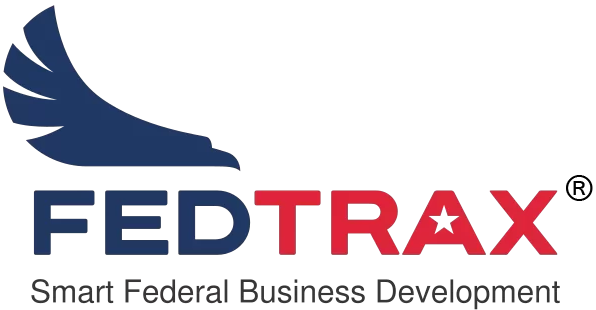
This is the first of a 2-part series on competitive contractor advantage with a focus on Government targets. Part 2 will deal with Teaming Partners.
In the wonderful world of Federal Government contracting, it’s easy to get lost in the shuffle of competitors that have the same look and feel as your company does. FedTrax works with firms that bring some unique, innovative solutions that separate them from the pack to give them a competitive contractor advantage. Some unique invention or business process that no one else has might be what stands out. Unfortunately, for many companies large and small in the Government contracting space, this isn’t very obvious, and it’s not what you think it is. For a great many technology firms, you are viewed as the same old same old by the average contracting officer. The phrase Systems Integrator (SI) comes to mind. Don’t confuse this with not being good or even great. That goes without saying.
Just look at your own website and literature. Recognize you might have a challenge in this area if you see any version of the following statements:
- “It’s our people that set us apart. They are our most valuable asset.”
- “Quality is built into everything we do.”
- “We become our client’s trusted partner.” [Gag thyself with a spoon on this one]
These things may all be true, but if they’re not backed up by 3rd party credentials, they offer no competitive contractor advantage to you, because everyone else says the same things. And they won’t win you any contracts. To quote Tom Cruise in A Few Good Men, “It doesn’t matter what I believe. It only matters what I can prove!”
Yet there is hope to get out of the commodity conundrum. If you’re in this box, focus on giving Contract Officers what they really want—less pain and less risk. Short of groundbreaking innovation, this is where my firm tends to work with clients before aggressively attacking the Federal marketplace.
Be Easy to Do Business With
Prime Contracts
When working for small business (SMB) customers, often the most difficult question from a Program Manager that we just got excited about working with us is, “OK, how do I get to you?” For most to be able to answer this question, the obvious and often most expensive answer is, win a prime position on as many contract vehicles as possible that are used by your Federal target agencies. This generally starts with some type GSA schedule for goods or services and can range through various GWACs/IDIQs and BPAs.
SMBs should be looking at getting on the relevant socio-economic set-aside contracts (SDVOSB, WOSB, 8A, etc.) that not only narrow the field, but provide the Government buyers with opportunities to fill their mandatory set-aside quotas when your drive business to these contracts. In addition, look to further narrow yourself by niche by attaining specialty designations called Special Item Numbers (SINs), offered by GSA, as well as Approved Products Lists (APL) for companies offering software or some other off-the-shelf solution.
Teaming Relationships
Cost, time to win, and lack of qualifications (more on this later) tend to limit many SMBs on how many of these vehicles that they can prime, so the next answer here is—teaming. Seek out and find the best teaming partners that support and win contracts from your target agencies. This means large companies and small companies, like those with 8A designations. Part 2 will get into how to give these firms what they want so you have a competitive advantage in this arena too and get noticed.
If you’re company offers some unique capability and capacity to deliver some custom technology solutions and Innovation, Research and Development (IRAD) work, don’t forget relationships with universities that are listed as qualified Federally Funded Research and Development Centers (FFRDCs). If you can complement what they bring to the table, FFRDCs can often have and/or win contracts that allow your Federal customers to buy from you.
Other Transactional Authorities
Speaking of IRAD work, those companies skilled at building technology prototypes should investigate and register for technology consortiums that serve agencies you want to work with. These consortiums are organized around a low-hassle way for Federal customers to buy called the OTA (Other Transactional Authority). OTAs have lower qualifications for use than typical contract vehicles governed by the Federal Acquisition Regulations (FAR) and are specifically used to bring new technological capability to the Government rapidly. The Defense Department uses these routinely. A few FedTrax clientele are associated with are the C5 Consortium and SOSSEC
Increasing all avenues for the Government buyer to purchase from your company makes you easier to work with because you are providing them with options and starts to form your contractor advantage.
Credentials for Contractor Competitive Advantage
Earlier I dissed the people and quality value propositions because everyone claims them, rendering them effectively neutered. Remember Tom Cruise? Third party credentialing is the only way you can begin to use them.
Quality Measures
Many SIs that work with the Government are well aware of quality standards that are often mandatory to compete as a prime, and even as a subcontractor, on certain contract vehicles. Capability Maturity Model Integration (CMMI) Level III or higher, often accompanied by ISO 9001 certification tells the Federal sponsor that outside organizations verify that you have your act together on the quality and process front. The is a perception of risk calculation for the Government, which is the reason that these qualifications are often requirements on certain IDIQ contracts or at a minimum worth rating points that set you ahead of organizations that lack them
Employee Credentials
Everybody who has ever staffed IT knows that the battle of resume strength is the key one to win to get the deal. The same goes for any claim you have to exceptional talent. If they have the advanced degrees and certifications, that helps you compete effectively on a job by job basis. To be organizationally known as something special, you need more. The CEO wrote the book on artificial intelligence, or a key member of the leadership team was the former Under Secretary of Defense, that sort of thing. Saying that certain people have an MBA does not distinguish them in a sea of sameness. So, the mantra here is, if you have really solid third-party credentials in key roles, you can tout that as a legitimate competitive contractor advantage.
Past Performance Competitive Advantage
The most effective way to set yourself apart for competitive contractor advantage is based upon work you have already done and ensuring your company autographs it with excellence. The Federal Government tracks all prime contractor experience using the Contractor Performance Assessment Reporting System (CPARS) and retrieves it via their own Past Performance Information Retrieval System (PPIRS). Any work you have primed, make sure you have good ratings. If not, work with the Government customer to negotiate better ratings (if you can). This system is the Federal version of Yelp!, the Better Business Bureau, and Angie’s List rolled into one.
A fat lot of good this does for companies just foraying into the Federal market or those that are subcontractors. You will need to provide past performance narratives for your bids, and the format requested will change slightly with each, but be prepared. Have your basic who-what-where-why-how much write-ups salted away on your SharePoint, listing both the prime contractor and the Government sponsor as the customer, with callable references. No Government experience? Then you must use your best commercial reference case studies here. Think prestige clients like Google, GE, or state governments work you have shined on.
Pulling a Rabbit Out of a Hat
Look, not everyone can work for the company that is building a manned rocket bound for Mars or started up as part of the Google family tree. Many firms like SIs, management consultants, and managed service companies don’t have that ‘1 big thing’ to created competitive contractor advantage. That means you must do multiple things to get the Federal Government’s attention and then list them proudly on your capabilities brief, website and other market collateral.
I have actually spoken to large and small companies that tell me, when asked, that there is really nothing that sets them apart from everyone else. There better be in today’s competitive environment, and you better be able to prove it! To the victor go the spoils and all the work.
“If you’re not first, you’re last!”
…Ricky Bobby
